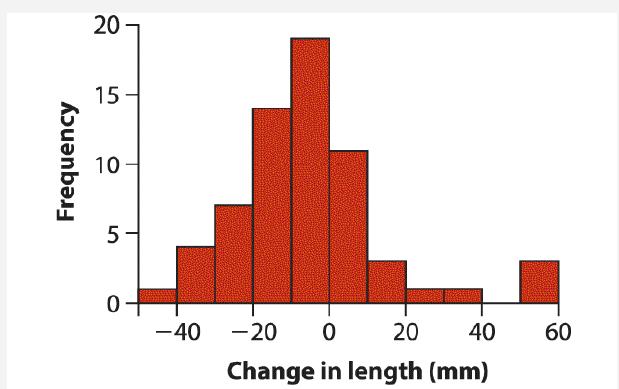Vertebrates are thought to be unidirectional in growth, with size either increasing or holding steady throughout life.
Question:
Vertebrates are thought to be unidirectional in growth, with size either increasing or holding steady throughout life. Marine iguanas from the Galápagos (see the photo on the first page of this chapter) are unusual because they might actually shrink during low food periods caused by El Niño events (Wikelski and Thom 2000). During these low food periods, up to 90% of the iguana population can die from starvation. The following histogram plots the changes in body length of 64 surviving iguanas during the 1992–1993 El Niño event:

The average change in length was −5.81 mm, with a standard deviation of 19.50 mm.
a. By how much did the iguanas shrink on average? Determine the most-plausible range of values for the change in mean length of marine iguanas during the El Niño event. What assumptions are you making?
b. Using your answer in part (a), what are some of the plausible values for the mean change in length over the El Niño event? Are the data consistent with a shrinking mean? Are they consistent with no change or even an increase in the mean?
c. How variable was the change in length among individual iguanas? Calculate the 95% confidence interval for the standard deviation of the change in length.
d. Test the hypothesis that length did not change on average during the El Niño event.
Step by Step Answer:

The Analysis Of Biological Data
ISBN: 9781319226237
3rd Edition
Authors: Michael C. Whitlock, Dolph Schluter





